INVESTIGATIONS
Bombing a water rig in sana'a governorate
February 16, 2023a water rig in Arhab district, north of Sanaa, was hit allegedly by two air strikes, in what is known as a double tap.
Print Article
- Incident: Bombing a water rig
- Attack type: Air strikes
- Location: Beit Saadan, Ozlat Al-Thulth, Arhab district, north of Sanaa
- Date: 10 September 2016
- Time: The first attack: between 01:28 and 02:55 am. The second attack between 08:40 and 09:00 am
- Physical Damage: Water rig damaged to the point of being inoperable. Equipment and vehicles were damaged, and a number of citizens’ motorcycles were destroyed, in addition to the room next to the water rig
- Potential munition: US-made Paveway II bombs
- Victims: 22 civilians killed, including three children, 20 - 42 civilians injured
- Allegedly Responsible: Saudi led coalition
Introduction
On 10 September 2016, a water rig in Arhab district, north of Sanaa, was hit allegedly by two air strikes, in what is known as a double tap. The second strike hit civilians and paramedics gathered at the site after the first strike, causing dozens of civilian casualties and property losses.
About the area
Beit Saadan area is located in Ozlat Al-Thulth, in Arhab district countryside, approximately 23 km north of Sanaa International Airport. The area is under the control of the Houthis. It is bordered to the east by Nihm district in which the Houthis and the Yemeni Government forces were fighting. The Yemeni government forces were receiving air and logistics supported from the Saudi led coalition.
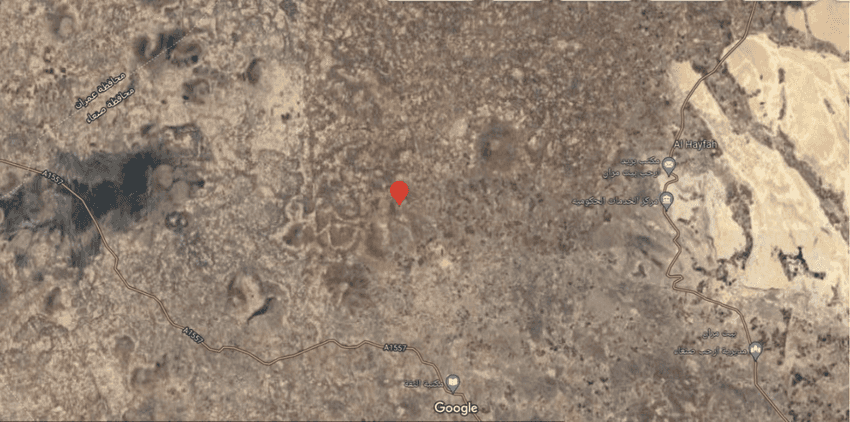
Figure A300 Photo of a satellite image of the water rig location, from Google Maps
The Incident
On 10 September 2016, the Saudi led coalition aircraft allegedly bombed a water rig in Beit Saadan area of Arhab district, north of Sanaa. The series of attacks, which began before dawn, continued until midday. According to several sources, including Human Rights Watch, it consisted of two series of air raids, and as such, is categorised as a double tap. Photos of the attack circulated by users on social media on the same day, showed the citizens’ bodies, including children’, as well as scattered vehicles and motorcycles.
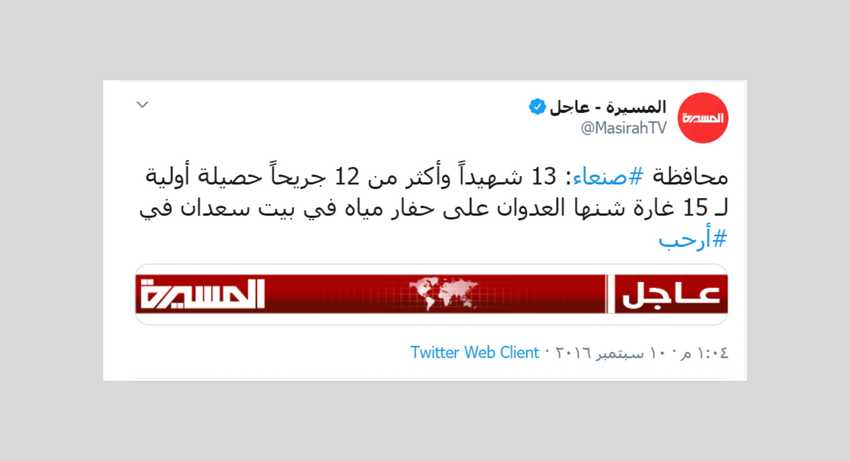
Figure A301 Screenshot of tweet by Al-Masirah TV about civilian casualties
The tweet above claims that in Sana’a governorate there are 13 dead and more than 12 wounded, the initial outcome of 15 raids launched by the [Saudi] aggression on a water rig in Beit Saadan in Arhab.

Figure A302 Screenshot of a tweet by Al-Masirah TV about paramedic casualties
This tweet states that the [Saudi] aggression warplanes again attack the water digger in the Beit Saadan area in Arhab, Sanaa governorate, and there are casualties among the paramedics.
On the same day, Yemen Today TV published a YouTube video report about the incident. The video showed destroyed vehicles of citizens, and the victims’ bodies after being bombed by the second attack when they gathered around the water rig. Euronews Arabic, which is funded by the EU, also published a YouTube video showing the site of the attack with the destroyed water rig as well as wounded civilians, including a boy in the hospital being interviewed. The Houthi-run Al Masirah TV published a YouTube video report. This report was deleted and re-published on Crimes of Decisive Storm on the people of Yemen Facebook page.
Date and time of the attack
Reports by Human Rights Watch and social media users on the one hand and the coalition’s Joint Incident Assessment Team (JIAT) on the other differed in how many attacks the coalition carried out, with the JIAT emphasizing that its attack at 8:40 AM was in retaliation for a Houthi attack. It did not mention a coalition airstrike preceding this one, in contrast to reporting by Human Rights Watch as well as social media users.
Testimonies in Human Rights Watch’s report indicated that the first attack on the water rig took place at 2:55 am on 10 September 2016, while the second attack on the gathering of citizens and paramedics took place between 08:00 and 09:00 am.
Saudi newspaper, Okaz reported the Joint Incident Assessment Team (JIAT) response in a press conference on 12 September 2017:
The Team found that at 2:38 am on Saturday 10 September 2016, the armed Houthi militia and the forces of ousted Saleh fired a ballistic missile from Arhab towards Saudi territory. Pointing out that on the same day at 8:40 am, one of the air formations spotted a ballistic missile launcher, gatherings of individuals and two trucks in the same vicinity (Arhab), and accordingly the military target was dealt with as it constitutes an imminent and direct threat to Saudi lands. Pointing out that it later turned out that what was targeted was a well-digger. Confusion occurred during visual monitoring due to the great similarity between the rig- which contains a similar crane and is close in shape- and ballistic missile launchers.
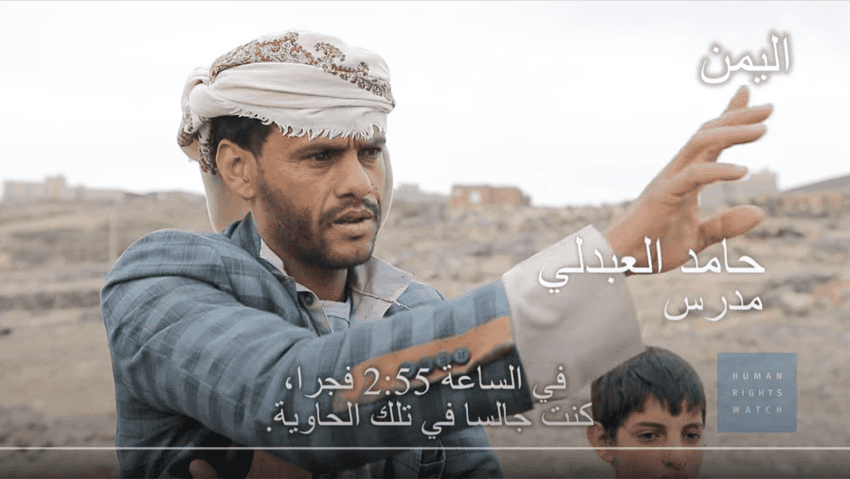
Figure A303 Screenshot from Human Rights Watch’s YouTube video
A quote from Human Rights Watch report:
Salim al-Sadani, a local farmer, said that when he learned that his uncle Mahdi al-Sadani had died in the airstrike, he went to the site, arriving at about 8 a.m. : “About 300 people, including the dead’s relatives, [were there] to remove the bodies. … I saw two warplanes arriving from the south. Between 8 and 9 a.m., I saw the missile coming down to ground as I was [here] next to my uncle’s body.” According to several tweets and the HRW report, the possible time range for the first attack was between 01:28 and 2:50 am, while the second attack occurred between 08:40 and 09:00 am. HRW’s reporting found that villagers came to remove bodies around 9:00 am, and that the bombing raids resumed again quickly and lasted until 12 noon. Issa Al-Shaflut’s tweet (below) claimed the bombing began at 01:28 am, attacking a camp and several sites. The tweets reporting that the water rig itself was bombed, however, came after 6 am.

Figure A304 Screenshot of the first report of the bombing in Arhab by Issa Al-Shaflut on Twitter
This tweet, posted at 1:28 AM, claimed that coalition aircraft were carrying out raids on Al-Sama camp, in Arhab.
Geolocation of the incident
The visual content related to the incident, documented by various sources, showed mountains surrounding the impacted water rig from different directions with small buildings nearby. By matching the terrain in Google Earth images from ground level, analysis of open source content was able to locate the water rig at coordinates: 15.683028, 44.163431, north of Arhab district in Beit Saadan of Ozlat Al-Thulth in Sanaa governorate.
The following, in Figure A305, includes screenshots of social media and news posts and images from Google Earth of the areas surrounding the water rig, from which Yemeni Archive was able to locate the water rig at coordinates 15.683028, 44.163431. This corroborates the coordinates given above.
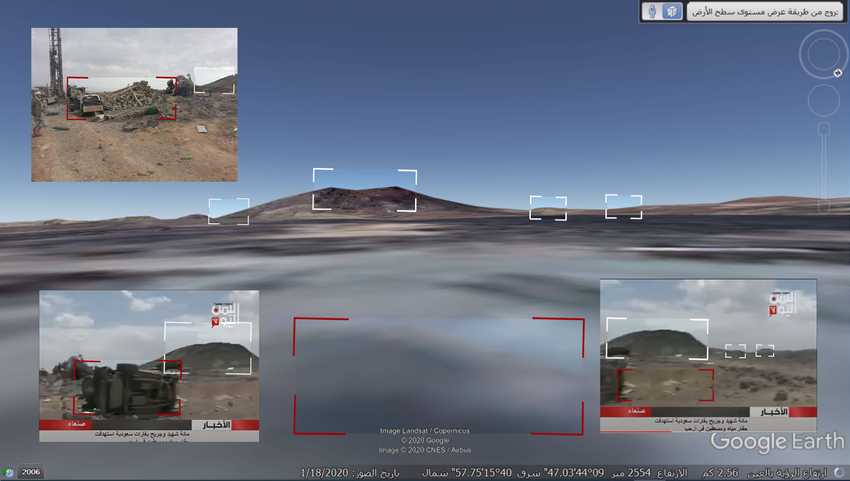
Figure A305 Screenshots from Yemen Today TV report on YouTube, an image posted by Sheikh/Mohammed Al-Habbari’s Twitter account of the water rig location, and a ground level satellite image from Google Earth (southwest)
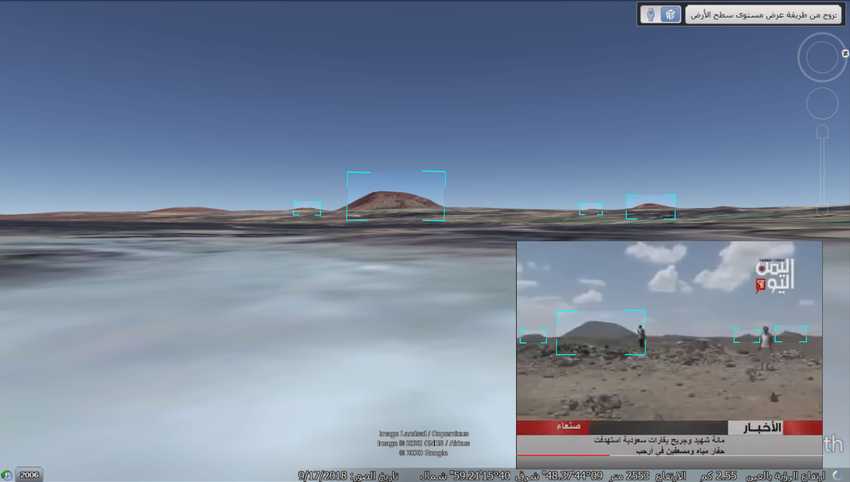
Figure A306 This is a screenshot from Yemen Today TV video of the heights west of the water rig location, and a sea level satellite image from Google Earth.
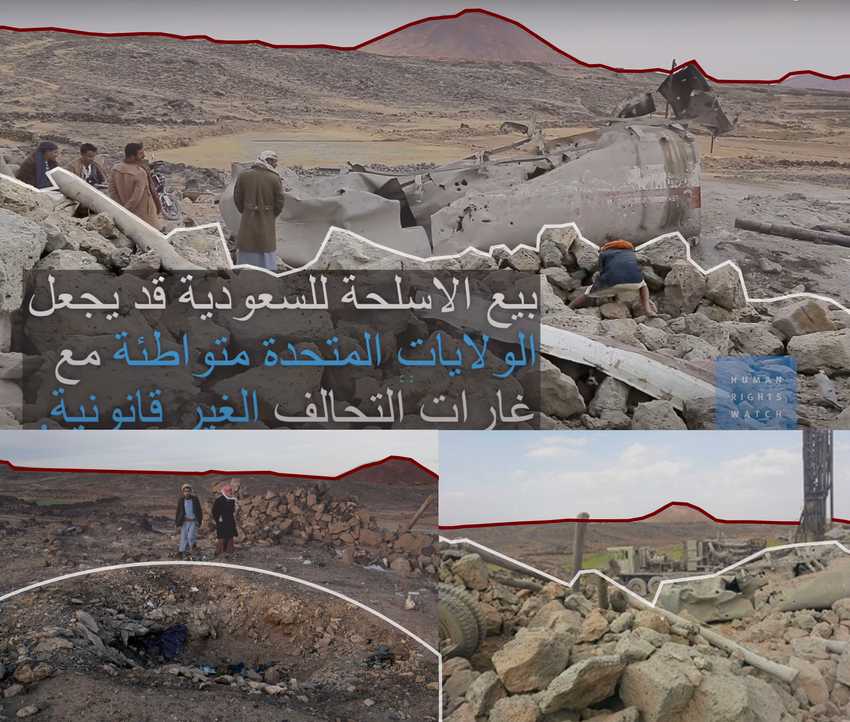
Figure A307 The top image is a screenshot Human Rights Watch video. On the bottom left is an image from Al-Mawqea Post website citing the New York Times, and to the right is an image from Storm To Give Back Twitter account of the heights northwest of the water rig
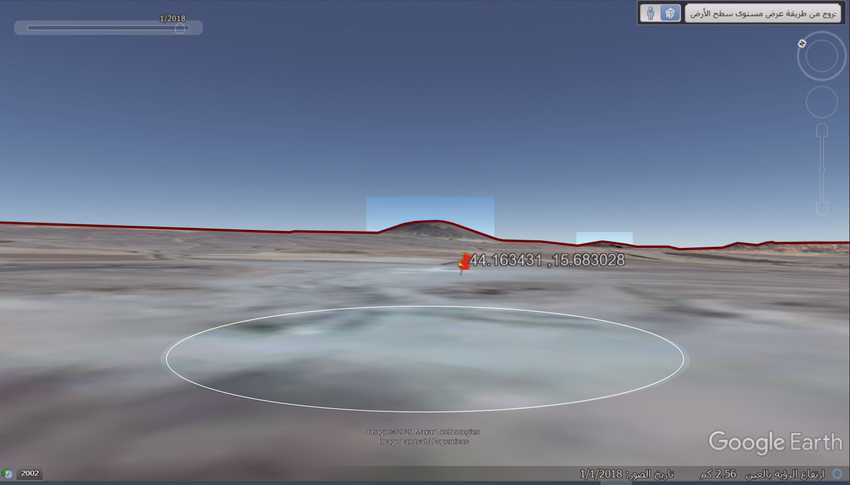
Figure A308 Sea level satellite image from Google Earth of the heights northwest of the water rig
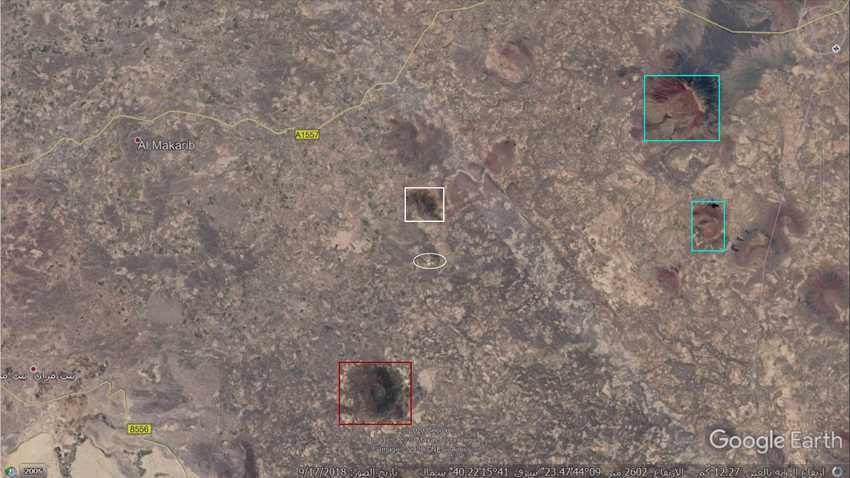
Figure A309 Satellite image from Google Earth of highlands near the water rig
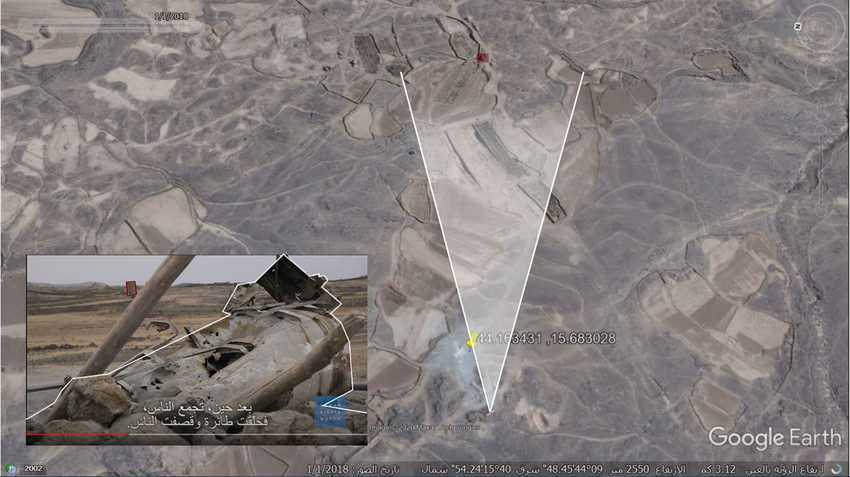
Figure A310 Screenshot from Human Rights Watch YouTube video showing a stone building near the water rig location matching satellite imagery
- A comparison of archival Google Earth images of the water rig location and the impact of the air strikes after the attack
Physical damage
The visual content appears to differ in the level of destruction, which supports Human Rights Watch’s findings that there was a second series of attacks during the morning. The visual content seems to show that the second attack was more destructive than the previous one, as it took place while civilians and paramedics gathered at the location. Screenshots from the videos from Al Masirah, Yemen Today TV, and Euronews Arabic together show what appears to be a completely destroyed water rig, a burnt transport truck and the remains of a large tank vehicle that seemed to be for fuel, destroyed and burned passenger car, and many body parts and corpses scattered on the ground. HRW’s report added that the bombing occurred on the last day of planned drilling, after the villagers had struck water. They had pooled together their personal funds to pay to drill the well to supply drinking water to their village. Open-source documentation of this incident also indicates that the raids damaged equipment, several motorcycles and vehicles at the water rig location. The raids also totally destroyed the room, likely the land guard room, next to the water rig (see images from videos below).
Several photos posted on Facebook claim to show the effects of only the first attack, as they revealed that the room next to the water rig was not yet destroyed. The photos posted by Abdel-Khaleq Sharhan and Majdi Ahmed Al-Shabibi on Facebook, (below the screenshots from the news videos) from different angles, showed that the room was not totally destroyed, next to the water rig and the vehicles. This means that the photos were taken before the second attack. However, these photos were not taken immediately after the first attack, as that is reported by Human Rights Watch to have occurred during the middle of the night, at 2:55 am. Human Rights Watch also reported that the second attack took place between 8:00am and 9:00 am.
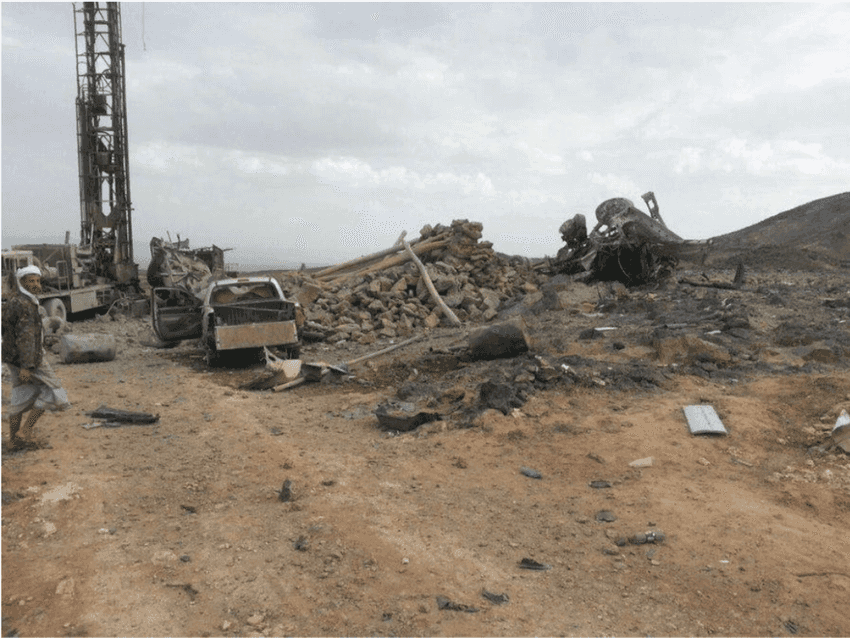
Figure A311 Image posted on Twitter by Sheikh Muhammad Al-Habbari
This image shows the destroyed room at the site of the water rig, thought to be the land guard room
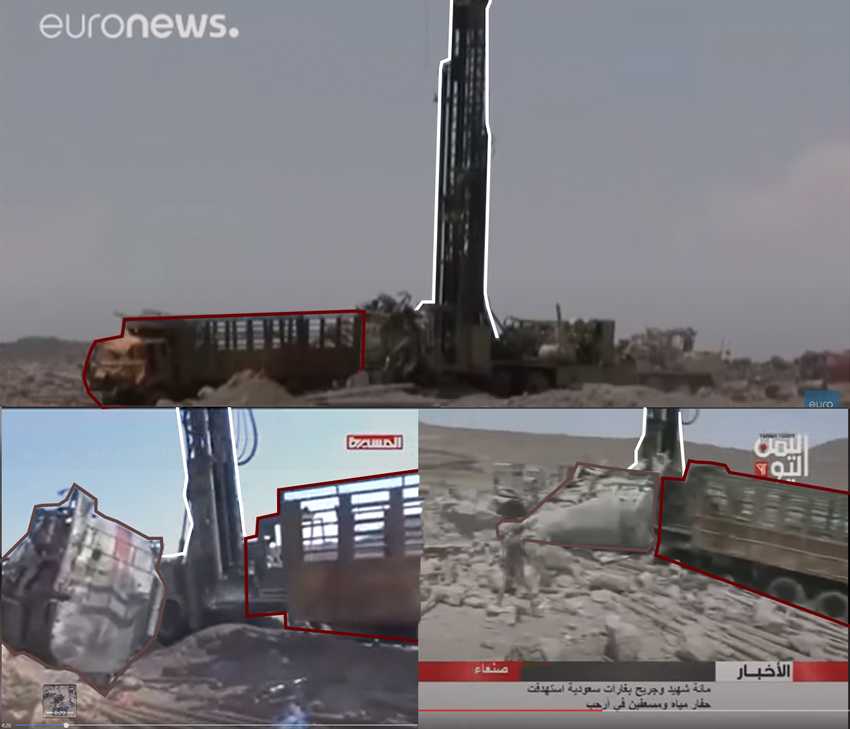
Figure A312 Screenshots from the videos posted, respectively, by Euronews Arabic, Al Masirah TV, and Yemen Today TV
These screenshots offer comparison of the effects of the destruction that resulted from the airstrikes on the water rig, revealed in the videos from Yemen Today TV, Euronews Arabic, and Al Masirah TV. They show consistency from a variety of sources.
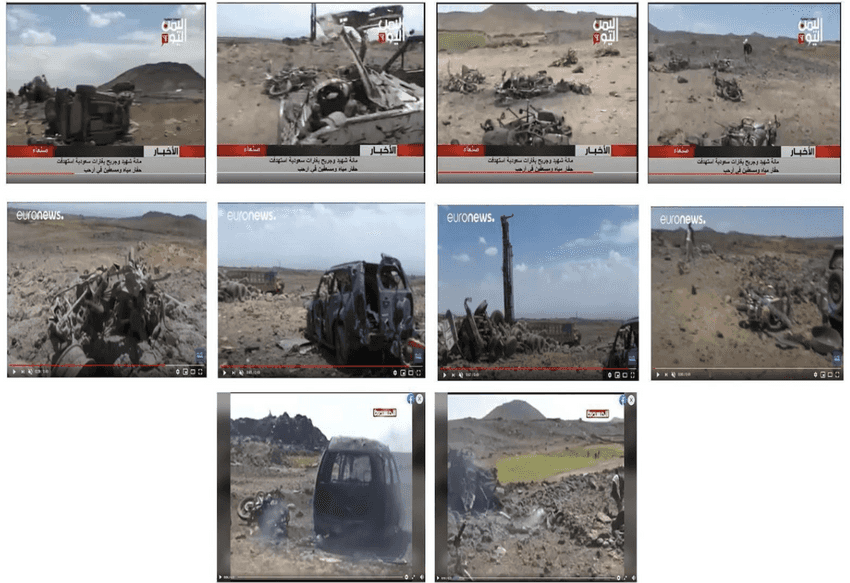
Figure A313 Additional screenshots from the videos posted, respectively, by Yemen Today TV, Euronews Arabic, and Al Masirah TV
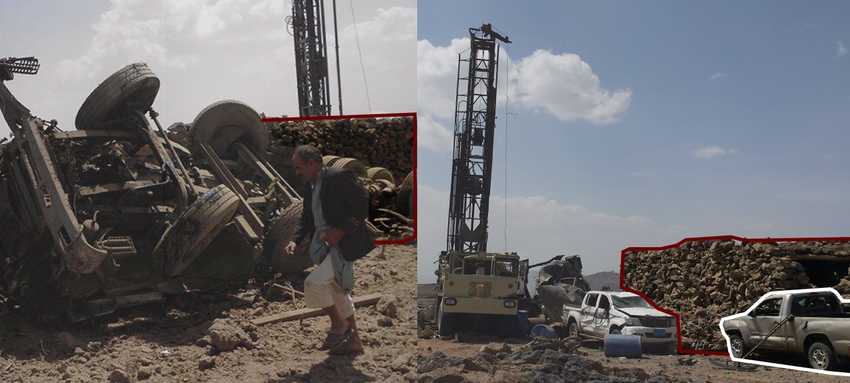
Figure A314 Photos posted by Abdel-Khaleq Sharhan and Majdi Ahmed Al-Shabibi on Facebook, from different angles, which showed that the room was not totally destroyed, next to the water rig and the vehicles, after the first attack
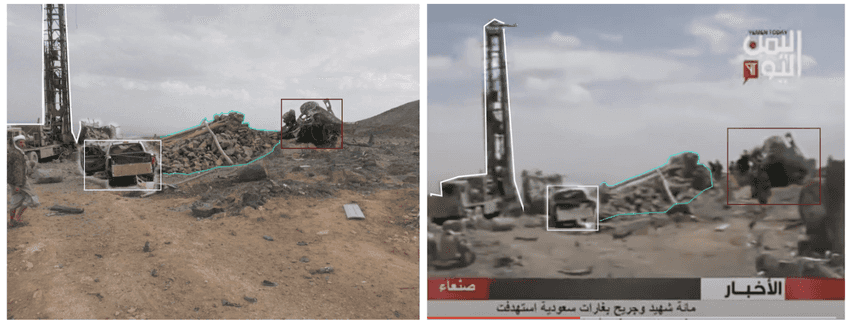
Figure A315 Screenshot from Yemen Today YouTube video, and an image posted on Twitter by Sheikh Muhammad Al-Habbari showing the destruction after the second attack
Potential munition
The visual content below, as Human Rights Watch’s video, shows one type of munition used in the double tap attack. A video by Human Rights Watch on YouTube showed that remnants of munition from the water rig location belong to the US Paveway II bomb, made by Raytheon Inc.
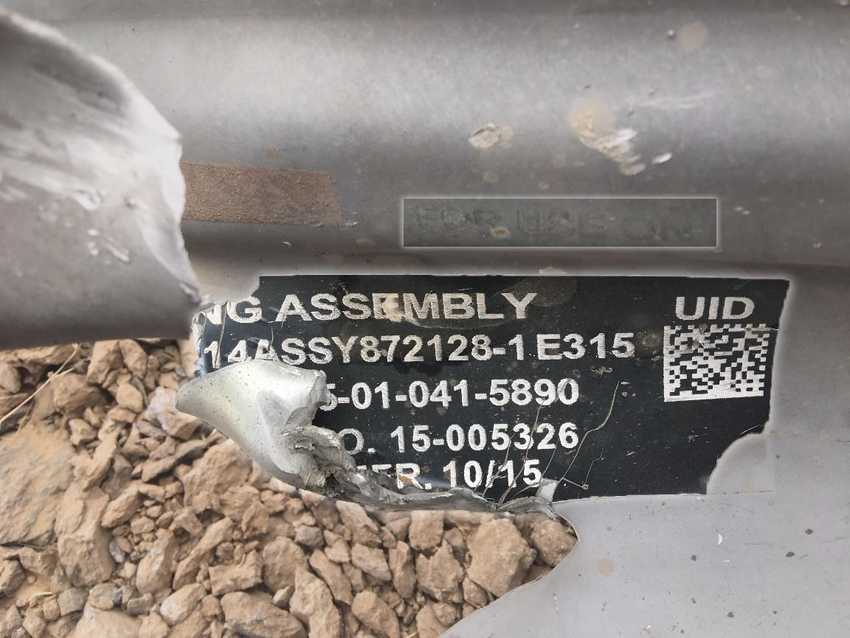
Figure A316 Photo of the remnants of the Paveway II bomb used in the attack, found by Human Rights Watch
Victims
There are different accounts about the number of the victims of the attack in international and local reports. Human Rights Watch reported, quoting the Office of the United Nations High Commissioner for Human Rights, that at least 31 civilians were killed and 42 others were injured. In independent reporting, Human Rights Watch confirmed the names and ages of 21 people who were killed in the attack, including three children aged 12-15 years.
Locally, Al-Thawra Net website published the names of 22 people who died in the attack on the water rig. Given the similar numbers of those who were killed and documented by name in the Human Rights Watch report and Al-Thawra Net website, these statistics can be relied upon as being more accurate, while the number of the injured ranges between 20 and 45 people, and has not been confirmed, according to multiple sources.
A paragraph from a Human Rights Watch report:
“…coalition aircraft struck the site of a water drilling rig near Beit Saadan village in the Arhab district, 30 kilometers north of Sanaa. The drill rig was in an unpopulated area reachable only by dirt road, about two kilometers from the nearest village. Multiple strikes over the course of the morning killed at least 31 civilians and wounded 42 more.”
Paragraph from a Human Rights Watch report:
“The first strike hit near a workers’ shelter occupied by nearly a dozen workers and managers, killing six and wounding five others. At about 9 a.m., after several dozen villagers came to remove the bodies of those killed and examine the site, three planes returned and proceeded to bomb the vicinity at least 12 more times, about 15 minutes apart, witnesses said. The strikes lasted until about noon, killing at least 15 civilians, and wounding dozens more. Human Rights Watch independently confirmed the names and ages of 21 people who died in the attack, including three boys ages 12, 14, and 15.”
The names of those killed, from Al-Thawra Net website:
Rabea Hamid Al-Athari
Mustafa Amin Ahmed Rashid Al-Athri
Mohammed Al Saadani
Mahdi Al Saadani
Abdul Ghani Musli Al-Dhahyani
Saleh Mohammed Abdel-Waseh Sawa
Mohammed Saleh Nasser Al-Salami
Fouad Sherian Majrash
Ahmed Mohamed Qaid Al-Salami
Ibrahim Yahya Majrash Al-Salami
Abdul Salam Muhammad Jassar
Abdullah Saleh Ahmed Jassar
Nassib Saleh Ahmed Jassar
Ahmed Moqbel Nasr
Mahdi Muhammad Ali
Mohamed Ahmed Ali Abdullah
Riad Muhammad Ali Qaid
Abed Saleh Ali Al Abdali
Nabil Saleh Jafash
Said Ayoub Hussein Saeed
Saleh Mohsen Al-Murahabi
Abdullah Melfi Al-Salami
Allegedly responsible
The spokesman for the Joint Incident Assessment Team said in a press conference on 12 September 2017, that the Saudi led coalition had hit the water rig, but explained:
“The Team found that at 2:38 am on Saturday 10 September 2016, the armed Houthi militia and the forces of ousted Saleh fired a ballistic missile from Arhab towards Saudi territory. Pointing out that on the same day at 8:40 am, one of the air formations spotted a ballistic missile launcher, gatherings of individuals and two trucks in the same vicinity (Arhab), and accordingly the military target was dealt with as it constitutes an imminent and direct threat to Saudi lands. Pointing out that it later turned out that what was targeted was a well-digger. Confusion occurred during visual monitoring due to the great similarity between the rig- and ballistic missile launchers, as they contain a similar crane and are close in shape.”
Conclusion
Analysis of open-source documentation demonstrates that on 10 September 2016, Saudi-led coalition aircraft allegedly bombed a water rig twice. The water location was in Beit Saadan area of Ozlat Al-Thulth in Arhab district, 23 km north of Sanaa International Airport.
Aircraft allegedly bombed the water rig for the first time between 02:38 and 02:55 am. The bombing resumed six hours later with raids attacking a gathering of citizens and paramedics who were at the site to help the victims. The aircraft used US-made Paveway II munition. 22 civilians, including children, were killed, and 20-42 civilians were injured. Several trucks, vehicles and motorcycles were destroyed.